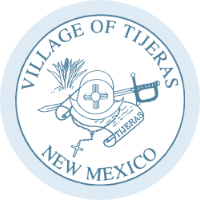About Us
The Village will preserve its rural mountain character, the natural beauty and existing resources, while encouraging development that serves residents and businesses and enables economic growth.
Excavation
The Village of Tijeras is a very old community, rich in culture. Excavation of the San Antonio and Tijeras Pueblos yielded evidence that human land use in the area dates back to the 1200s. Populations shifted throughout the centuries as Hispanic and Indian
peoples managed the threat of the aggressive nomadic raiders such as the Faraoan Apache and the Comanche.
Population
In 1619, Albuquerque families settled in the area, and by the mid 1930s, Tijeras was one of the primary population centers on the east side of the Sandia Mountains. Tijeras is nestled at the base of the Sandia Mountains. It is located only a few miles east of Albuquerque , off Interstate 40. The Village is small, just over 500 residents, but offers a wonderful alternative life-style to that of neighboring Albuquerque.
Location
The Village of Tijeras is located at a junction of two canyons: Tijeras canyon, which runs east-west and divides the Sandia Mountains from the Manzano Mountains, and Cedro Canyon, which runs north-south through the Manzano Mountains, terminating at Tijeras Canyon.
Topography
The soils on the 0% to 3% slopes of the canyon floor are of the Manzano series, formed from mainly limestone and sandstone. Surrounding the canyon are the lower slopes of the Manzano Mountains and Sandia Mountains, ranging in grade from 15% to 80%. The slopes are mainly the Carlito series consisting of deep, well-drained soils weathered from shale on the sides of the mountains. Permeability of this soil is slow, runoff is rapid and the possibility for soil erosion is high. In the southeast comer of the junction between the canyons is an area of La Fonda soil series, derived from limestone and sandstone. (Soil survey of Bernalillo County and Parts of Sandoval and Valencia Counties, New Mexico).
Dendrology
Trees on the steep slopes are primarily Pinon Pine and Oneseed Juniper, Cottonwood and Willow grow along the watercourses. Oak, Mountain Mahogany, Big Sage, Chamisa, Sumac, Apache
Plume and Fourwing Saltbush are the primary shrubs. Among the grasses, Sideoats Orama and Blue Grama are dominant, but Western Wheatgrass, Black Grama, Galleta, Bottlebrush
Squirreltail, Needle and Thread, and Sacaton also exist. Mostly grasses grow on the 0% to 3% slopes of the canyon floor. Blue Grama, Western Wheatgrass, Galleta, and Black Grama are
dominant, less abundant are Black Grama, Three-awn, Ring Muhly, Sand Dropseed, Side Oats Orama, Indian Ricegrass, Needle and Thread, and Botttlebrush Squirreltail. (Soil survey of Bernalillo County and Parts of Sandoval and Valencia Counties, New Mexico.)
Update Communication Preferences
If you would like to update your communication preferences please fill out the form below
